The digital camera - The sensor
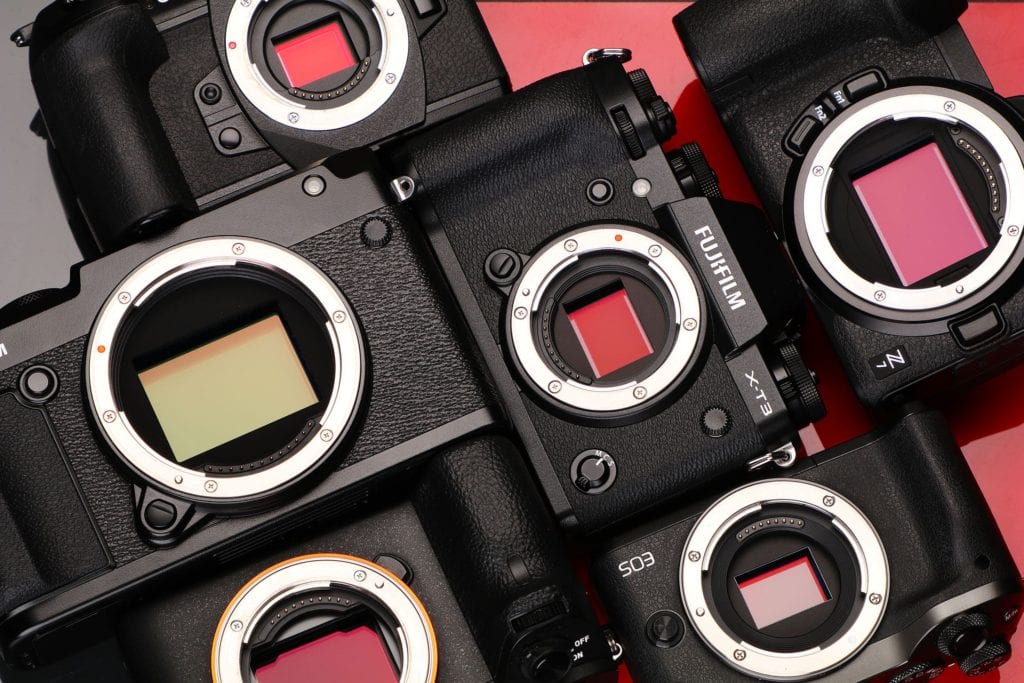
In this fourth lesson of our virtual photography course we talk about one of the most important components of our camera: the sensor .
The sensor is a photosensitive medium that converts the light captured by the lens into an electric charge, translating it into electronic signals.
Before the advent of digital technology, this task was assigned to film, a photosensitive tape capable of preserving the captured image through a chemical process.
There are several types of photographic sensors: full-frame , APS-C and Micro Four Thirds . As always, the male producers compete to see who has the biggest one, who has the smallest and most performing one.
Will a one-inch photo sensor on your phone be able to generate the same photos as a full-frame sensor?
As always, the answer is: it depends. It depends on which lenses we have available and on the skills of whoever takes the photo, but if we could hand over 2 sensors of different sizes to the same photographer, mounted on two identical cameras, equipped with the same lenses, in the same light situation, we would obtain a same result?
Let's try to understand it: here is a brief (not so much, let's say exhaustive!) guide to understand what a photographic sensor is, how it is made and which type is more suitable for us and for our lenses.
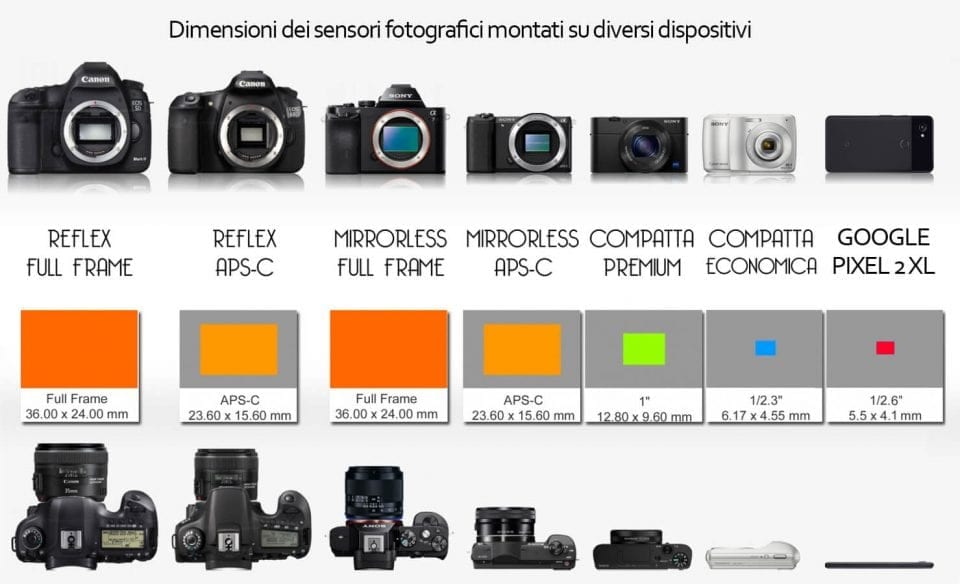
Photo sensor: what it is and how it works
I've always thought that the best way to remember how something works is to compare it to an object we use every day. So let me explain how a camera works by comparing it to one thing you all own: your eyes .
Director: Quark theme song, thank you!
In fact, there are many human inventions that copy the functioning of things present in nature and even cameras are no exception.
What happens when we observe something? Let's see it together and, I don't mind the opticians, but it will be a simplified description to be usable by everyone, while remaining functional to the sensor topic.
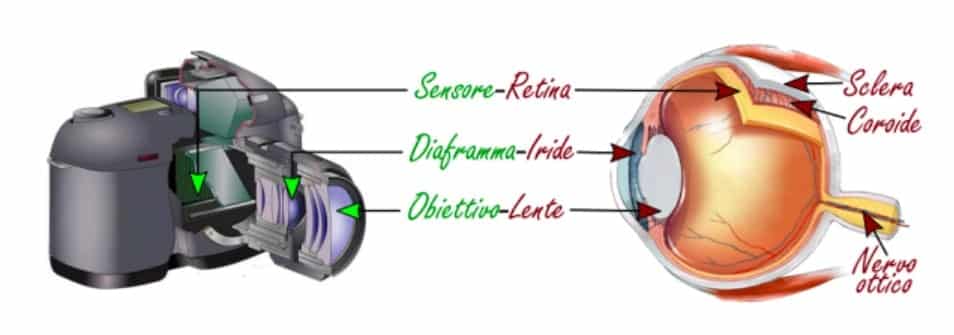
Here we are, this view is beautiful!
We decide the part of the image that interests us and we focus it : the muscles inside the eyeball lengthen or shorten the lens , in the same way in which the objective lenses inside our camera move to obtain a sharp image.
But how is the exhibition ? Is it right? In our eye it is the iris that takes care of choosing how much light should enter, it dilates, closing the pupil (the "hole" through which the beam of light passes) in the presence of a strong light and contracts by "opening" or rather say, by dilating the pupil, if the ambient light is too dim. We can say that the pupil works just like the diaphragm , regulating the amount of light that enters the system. The maximum aperture of our pupil is 8 mm, the minimum 1.5 mm.
Curiously, what happens when we look at something we like is also comparable, exactly like when we take a portrait and open the aperture to blur the background, our pupil dilates (until it becomes more than 5 times larger) when we look at something we think interesting or that we are fond of.
At this point, if all goes well, the image reaches our retina : the sensor in which the photodiodes imitate the behavior of the receptor cells ( rods and cones ). The cones are responsible for the perception of color in bright environments, they are of 3 types depending on the wavelength to which they are sensitive, therefore of the colors, R (Red, red), G (Green, green! Attention, not G as yellow!) and B (Blue). Does RGB remind you of anything?
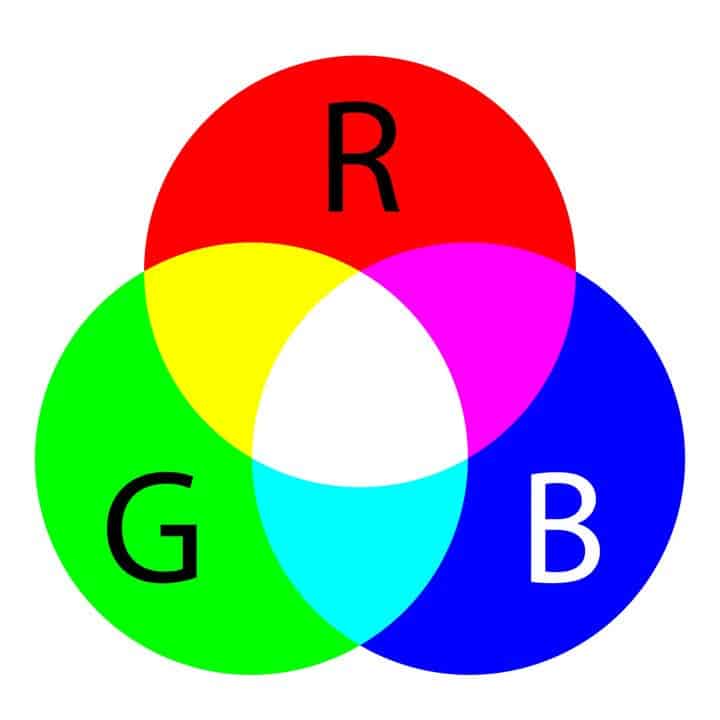
We, and our photographic sensor, see in colour, but we have photoreceptors sensitive only to 3 colours, how is this possible? The whole range is created by mixing these 3 colours . Rod cells perceive the variation of light intensity in dark environments . They therefore take care of adjusting the ISO in our anatomical camera.
Ok, now that we have more or less understood that the photographic sensor is the retina of our camera, let's see how it works in detail and how it is done. (if you are interested in the eye and how it works, I suggest you look on Wikipedia !)
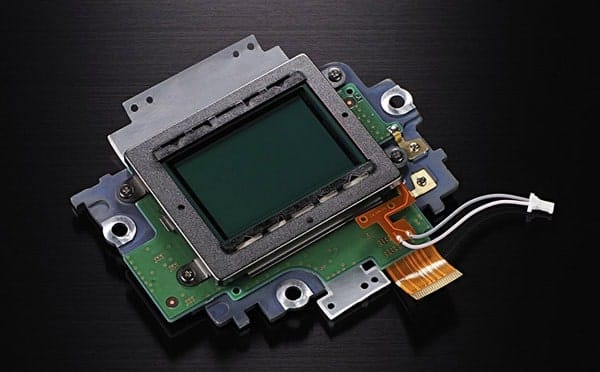
The photographic sensor is a chip , a more or less large silicon rectangle that has replaced the film in modern cameras. It is used to convert light into electrons , thus producing digital information that allows the reproduction of the framed scene and it does so through its millions of photodiodes, pixels , of very small size: we are talking about micrometres (for instance, a hair is about 80 micrometers thick). Each pixel is a light-sensitive electrical element which generates an electric charge when it intercepts its wavelength.
For the nerds, photodiodes convert light into an electrical signal thanks to the characteristics of pn junctions , when a photon hits a photodiode an electron passes through a conduction band and the consequent formation of a hole occurs . When we have a suitable number of photons inside the pn junction, enough electron-hole pairs are created to create a measurable potential difference (DDP). This potential difference is directly proportional to the amount of photons and thus to the intensity of the incident light .
However, the final image generated in this way has a flaw: it is in a gray scale , but we want a color photo, so how do we do it?
A mosaic filter called Color Filter Array (CFA) is placed on the surface of the photographic sensor, the most common is called Bayer matrix , from the name of its inventor, composed of 3 RGB colored filters .
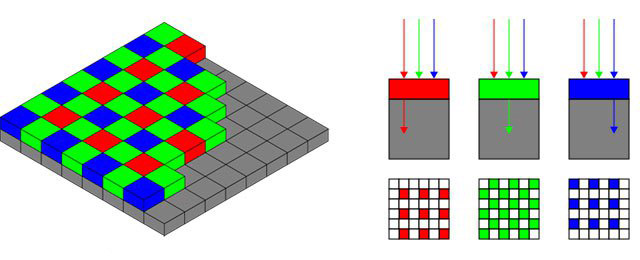
The smartest of you are surely wondering why these 3 colors and not the primary ones. What happened to yellow? Do you remember the speech made on the eye earlier? Here you are. The human eye is more sensitive to green , even more than it is to red or blue, which is why the Bayer matrix is formed by repeating a pattern made up of 2 green, one blue and one red squares .
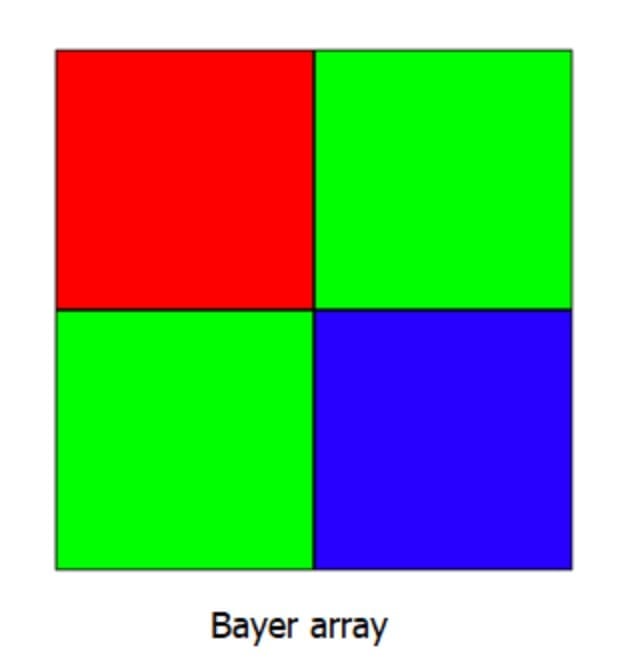
There are therefore 4 filters in front of as many photodiodes , each one eliminates the components of the colors different from its own, therefore each photodiode reads the specific luminosity at that point for only one colour . To optimize the collection of light, in the empty spaces between one photodiode and another we can sometimes find microlenses that redirect light that would otherwise have been lost onto the photodiode.
Now the camera processor intervenes which applies an algorithm and carries out the " demosaicing ", that is, it extracts the color values from each group of 2×2 pixels , this allows it to mix them correctly and obtain the original color of that given quadrant . Easy, right?
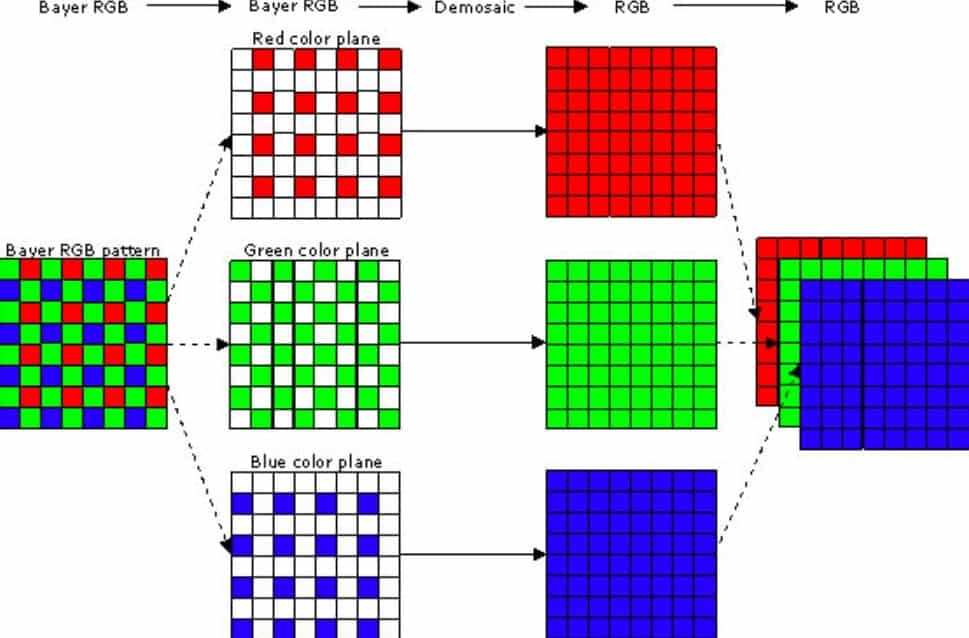
The alternative to Bayer matrix filters are Foveon sensors.
The Foveon X3 is a particular photographic sensor produced by Sigma , it was created to imitate what happens in an analog film , and it consists of the overlapping of 3 layers , each capable of capturing the light of a certain color , each pixel is therefore able to capture the incident light in a single photosite and produce the signals relating to all 3 fundamental components of the light beam.
In this way the sensor is capable of acquiring the entire chromatic range without the need for interpolation as occurs in traditional sensors. With this vertical separation of the RGB shades, the presence of a color filter and a low-pass filter is therefore superfluous, since the interference caused by the matrix arrangement of the pixels, a typical problem of other Bayer matrix sensors, is absent.
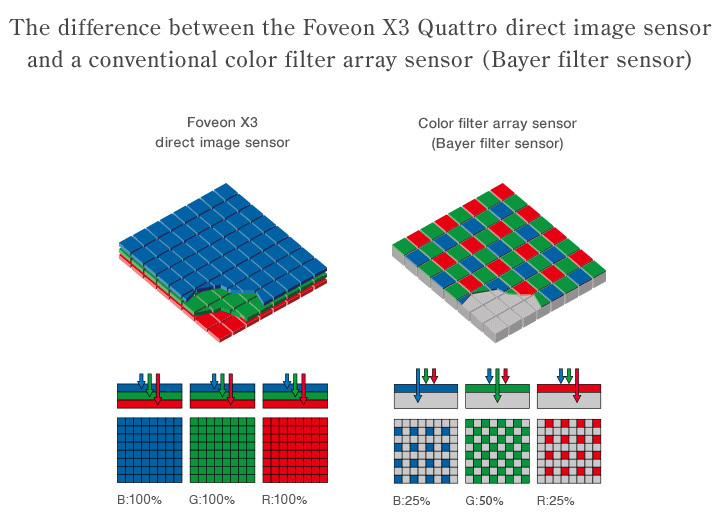
In this way the photographs have much more realistic tones and are equipped with an excellent rendering of detail . The Foveon sensor has a very low ISO resistance but generates razor-sharp images , hence the loyalty shown by those who own this photographic sensor who are very few, but very attached to the product.
If you have managed to follow me here (even more so if you got lost along the way) you will easily understand that building a photographic sensor is not an easy and cheap process.
They are "cooked" in series on a silicon wafer (i.e. a circular plate): the greater the size of the sensor, the lower the number of sensors that can be obtained from each single wafer, thus increasing the final cost.
A few numbers to understand each other: from a 20 cm wafer with a price of around €1700, it is possible to obtain only 20 full-frame sensors after around 500 processes .
So you understand what the high price of a full-frame camera is justified by.
In fact, the difference is all here, the machines with APS-C sensors are not technologically less advanced, simply starting from the wafer we talked about before they can obtain 200 APS-C sensors , 10 times the number of full frames!!
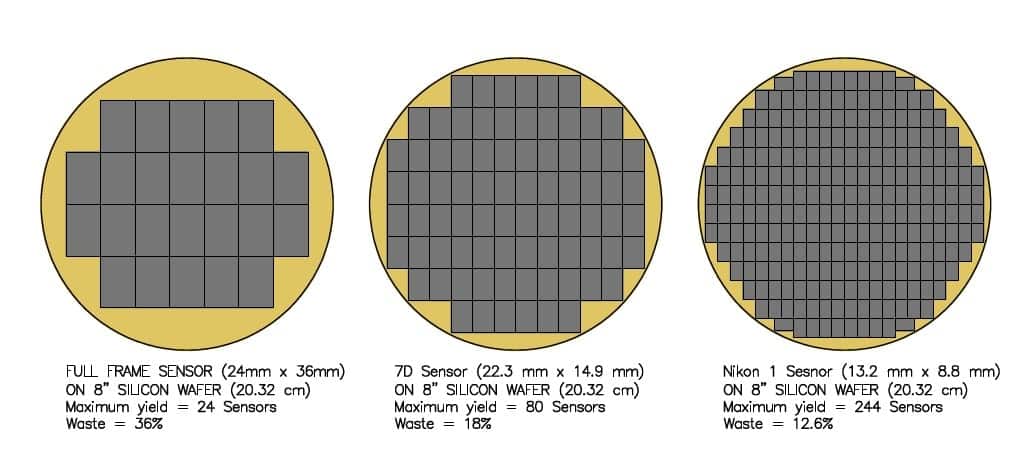
Moreover, if in my wafer one of the sensors is defective and must be discarded, in the case of full frame sensors I will have a loss of 5%, a percentage that drops to 0.5% in the case of APS-C. These seem negligible numbers, but the producer simply loses €85 in raw material in the first case and €8.5 in the second. The lost revenues must be added to this figure and must then be multiplied by each production that is made. All in all, you reach a decent amount of difference at the end of the day.
So, we mentioned them, but what changes between a full frame photographic sensor and an APS-C one?
Photo sensor: the dimensions
When there were still analog cameras , the "photographic sensor", represented by film , was common to almost every model: a 35 mm roll was used in most compact and reflex cameras on the market. With the advent of digital things have changed and many sensors of different sizes have been born, each manufacturer has tried to optimize production costs and image quality by creating ever smaller and therefore cheaper sensors trying to maintain the same quality standards.
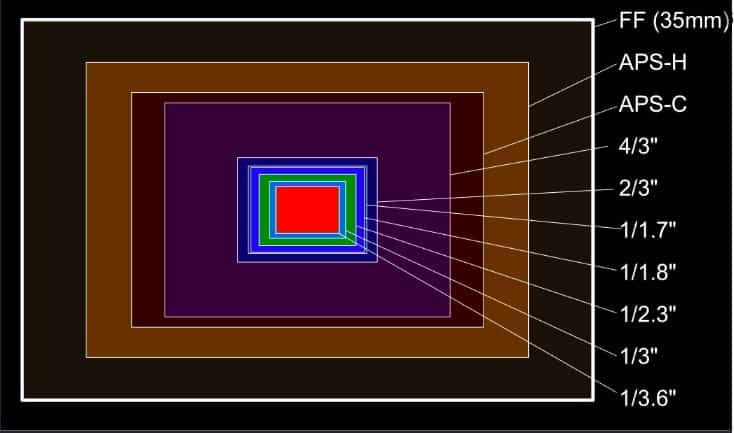
Obviously the size of the photographic sensor depends on the size of the mirror and the viewfinder , for this reason the sensors of reflex cameras are larger than those present in compact cameras: they cannot go below a certain limit or it would not be possible to have the viewfinder and mirror.
The size of the photo sensor is one of the most important things to know when choosing which camera to buy. There are many acronyms: APS, APS-C, APS-H, FF, MFT, 1/1.8” just to name a few, getting lost is very easy, let's do some clarity to understand what we are actually going to buy.
*Can we get the Quark theme song back? Thank you*
The size of a sensor is indicated in the same way as televisions: in inches .
Have you always taken them for granted without going to check because you don't understand what they refer to?
Me too until recently, let me explain. Do you remember televisions with cathode ray tubes?
The measurements in inches of a screen mean the diameter of the glass tube which wrapped the cathode one . Be careful though, the number of inches does not indicate the actual image area, which is less than the diameter (generally equal to about 2/3 of the reported figure). This measurement has remained identical in modern televisions and also in photographic sensors, consequently we can say that the sensor size is the diameter of the circle in which the rectangle can be inscribed .
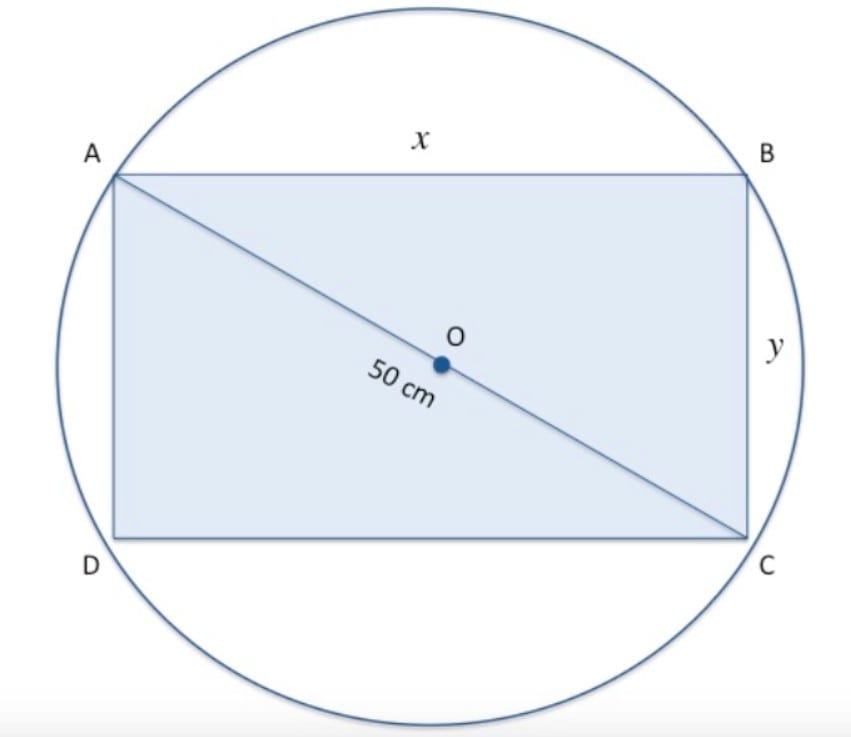
Therefore, it does not mean that a 1/1.8” photographic sensor has a 14 mm diagonal, but it has a measurement equal to 2/3, therefore about 9 mm.
I know, it's not exactly immediate, but in practice it's not very useful information, the fundamental thing is to understand which sensor is the largest. Not to mention that if you have managed to understand the chemical and physical explanation of how a photographic sensor works these proportions should be child's play for you.
Don't worry, after science, chemistry, physics, geometry and mathematics, I solemnly swear not to bring up philosophy! At least a little English…
But let's get back to us, the time has finally come to see together which sensors exist, what size they have and where they are used.
For completeness, I point out that numbers like 1/1.8" are read as "sensor by one divided by one point eight inches".
1/2.5 inch
It is the smallest photographic sensor, we find it in compact cameras of the economic range . Very light, with extremely small dimensions ( 5.76 x 4.29 mm ), this sensor does its duty in good light conditions , but when the light goes down, noise quickly appears in our photo.
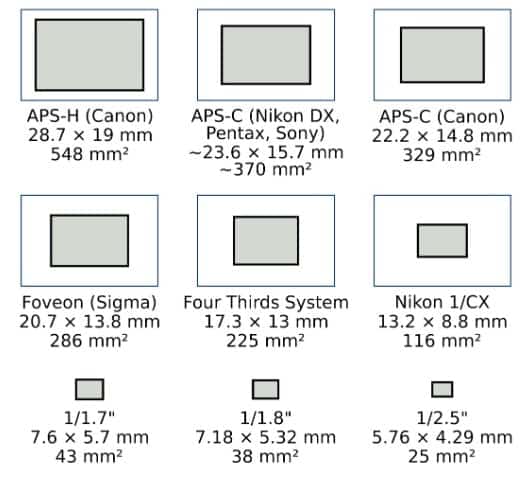
1/1.8 inch
I remind you that in fractions if the number below is smaller the result is greater, therefore this sensor is larger than the previous one: 7.2 x 5.3 mm. With this photographic sensor we have more information , we are able to better manage the details, it is the photographic sensor generally used on compacts . We are already able to provide a slight depth to photos, detaching the subject from the background.
1 inch
This sensor is also widely used in compact cameras , but we can also find it in some cheaper bridge and mirrorless cameras . With dimensions of 13.2 x 8.8 mm , it is already able to provide you with good quality by collecting much more light information than previous models.
4/3”
With the 4/3” photographic sensor, also called micro 4/3, Micro Four Thirds or MFT , we finally arrive on the reflex cameras . Conceived in 2002 and developed by Olympus and Kodak it is equivalent to ¼ of the full frame sensors , with a dimension of 18 x 13.5 mm . It has a base/height ratio of 4/3 , unlike APS-C which is 3/2. The quality is already starting to be very interesting .
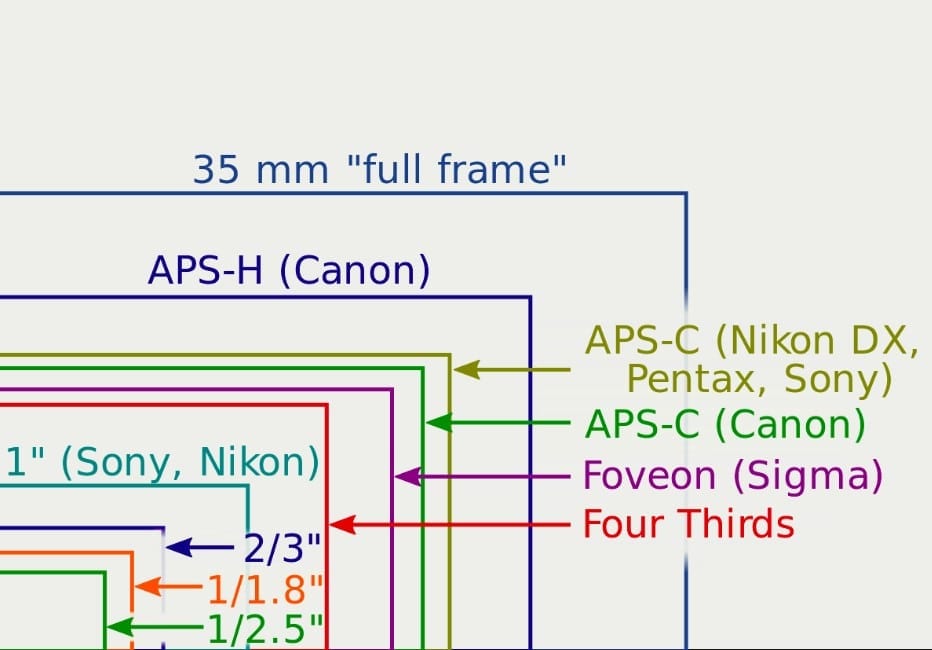
APS (1.8”)
This is the photographic sensor most present in SLRs, both mid-range and entry level , in bridges and we also find it on some compact top-of-the-range ranges .
APS is the acronym for Advanced Photo System , a photographic system with different cameras and rolls launched in 1996 which used a 24 mm film, therefore smaller than the classic rolls. Although this system was abandoned in a short time, the reduced format size quickly took hold because compared to full format it has a lower production cost , allows the camera to be more compact and weighs less due to the smaller size of the pentaprism and provides the possibility of reducing the size of the lenses (which are therefore cheaper to produce and more comfortable to transport).
With the term APS-C (C stands for classic) we generally indicate sensors from different manufacturers which sometimes have slightly different dimensions. The APS-C photo sensor from Nikon (which renames them DX), Sony , Pentax and Fujifilm measures 23.6 x 15.7 mm , Canon 's is smaller: 22.2 x 14.8 mm . It often happens to find numbers like 1.5 or 1.6 on reflex cameras; it is their ratio compared to the size of the full frame sensor , so on Nikon we will find 1.5 and on Canon 1.6.
There is also the abbreviation APS-H (high definition) used by Canon on some cameras of the 1D series, it is a photographic sensor of intermediate dimensions between APS-C and full frame, with a dimension of 28.7 x 19 mm .
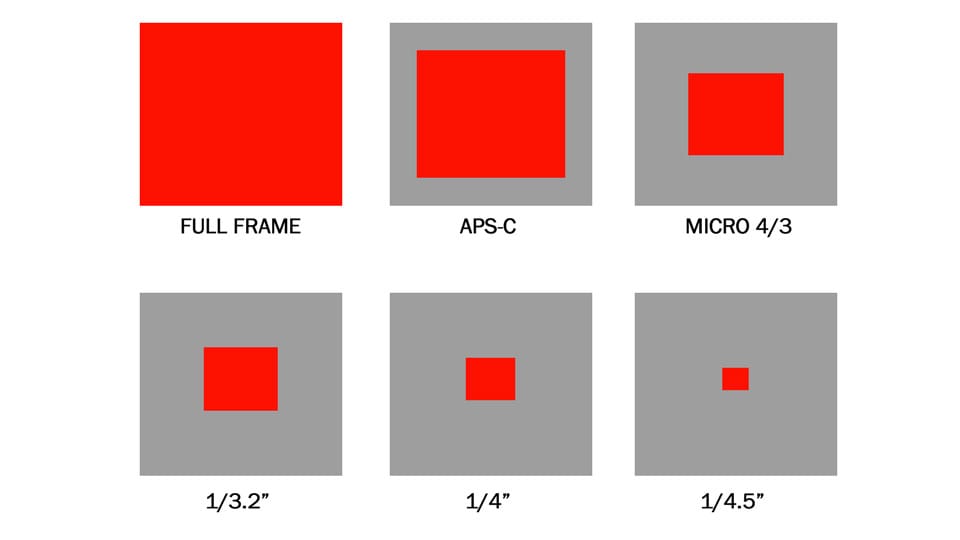
Full Frame
Here we are at the best photographic sensor, capable of collecting more light than all previous sensors thanks to its dimensions of 36 x 24 mm , equal to those of the most used photographic films. Let me point out a very funny thing: rolls of this size were defined as "small format" while now the full frame photographic sensor is known as full format ! Given the particularly high cost of producing such a large sensor, it is used almost exclusively on professional and top-of-the-range cameras . Obviously the quality of the result obtained is higher than those obtained with the sensors previously discussed.
And the lenses? Lenses are created specifically for the photographic sensor on which they will be mounted . There are lenses for the Micro Four Thirds system, for the APS-C system and for the full frame system. Can we mount them on anything if the bayonet is compatible?
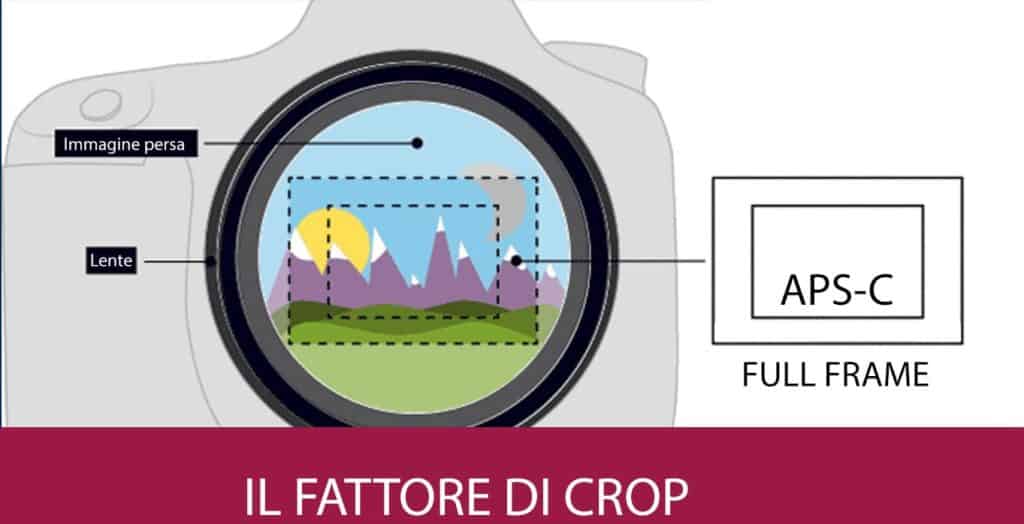
APS-C lenses on full frame
Yes, in general they can be mounted on full frame machines, however compatibility must be verified .
As for Nikon, DX lenses can be mounted on an FX camera without problems, generally the camera responds autonomously by reducing the coverage of the images in the viewfinder by cropping them thus avoiding the annoying black vignetting at the corners of the image, alternatively in the menu there is a function that allows you to set the crop.
Same thing can be done on Sony and Fujifilm cameras.
On Canon SLRs it is not possible because the full frame mirror is larger and therefore it can break during the overturning during shooting.
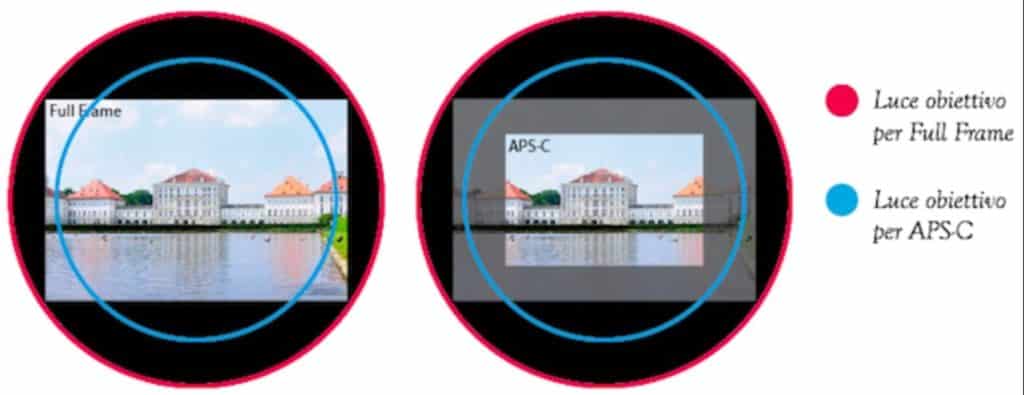
Full frame lenses on APS-C and MFT
But the opposite is also true: lenses designed for full frame can be used on APS-C cameras , when a lens is mounted on a smaller sensor than the one for which it was designed only the central part of the lens is used for shooting images and this is equivalent to cropping the captured image excluding the edges of the frame .
The ratio between the size of the full-frame sensor and the smaller ones is called the crop factor (we will come back to it in a dedicated article) and typically has a value that oscillates between 1.3 and 2.0 , in particular around 1.3 for APS-H sensors , 1.5 for Nikon , 1.6 for Canon and 2 for Micro Four Thirds .
This is why using a full frame lens can be a smart move: by mounting a 600mm on a Nikon APS-C for example, taking into account the magnification factor of 1.5 we will obtain a focal length of 900mm, nothing bad huh?
Obviously the best choice for the quality of your photos is always better to use the lenses designed for the type of photographic sensor of your camera.
The megapixels
Do you remember what I told you at the beginning?
Each photographic sensor is composed of a number of photodiodes, arranged in a checkerboard pattern, each photodiode perceives a certain amount of light and produces an electric charge, which is collected by the sensor circuits and carried to the camera components which deal with the processing of the 'image.
Our photos are therefore made up of a certain number of points (called pixels , portmanteau of Picture Element ), each one generated by a photodiode.
If the image we get is 6048 x 4024 pixels large, we know that our sensor will have 24,337,152 photodiodes, just do the multiplication. So it's about a 24.3 megapixel camera.
The number of pixels that make up the sides of our photos maintains the ratio between the sides of the sensor , in this case in fact it is a full frame (therefore 36 x 24 mm).
However, we often hear about effective megapixels and see that in the specifications of a camera there are different values of mp, the effective ones and the total ones, how is this possible?
Not all of the pixels on the sensor are used in image creation, some take care of secondary functions, such as determining color temperature , contrast or noise elimination . The number calculated previously is that of effective pixels, adding the number of pixels with secondary functions we obtain the total number of pixels.
How much math huh? Well, this is why they teach it to us in school!
So having more pixels is “more better”?
The consideration that comes naturally to everyone is: therefore to have a high resolution image you need to fill the sensor with pixels! Sure, and that's why manufacturers try to increase the megapixels of their cameras more and more.
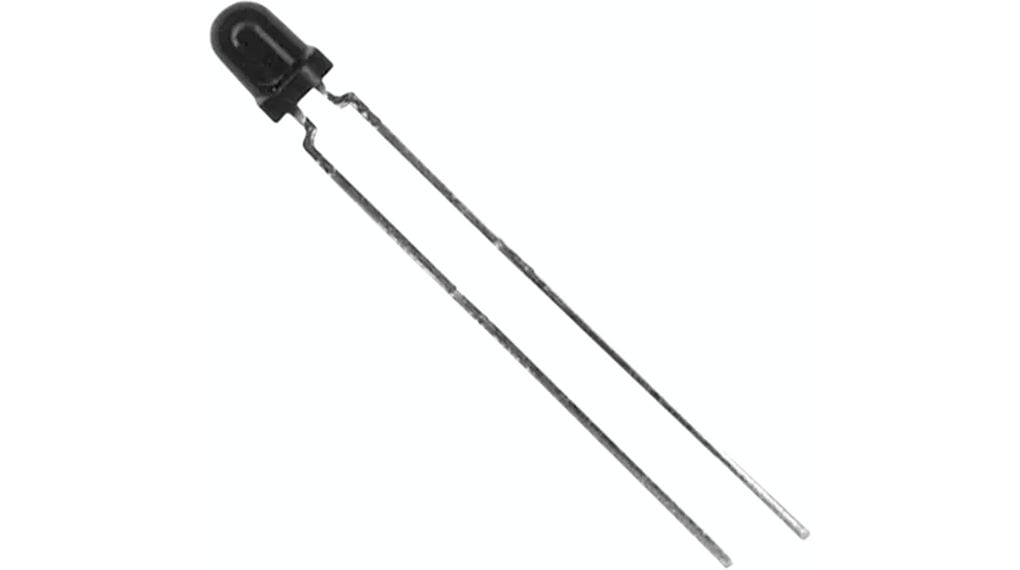
So more mp= better picture? Not always.
In general , a larger photographic sensor produces a better quality image , we can afford smaller photodiodes , which can therefore store a greater amount of light than a smaller one at the same time, and therefore our images will have less noise and a wider dynamic range , thus providing more detail even in areas with difficult light situations, therefore more detail in areas of high or low light.
So why not make one meter by one meter sensors?
Apart from the price, which we have already talked about before, we will need bigger cameras, bigger lenses and higher energy consumption. In addition, this causes speed problems in transferring data to the processor, because our shot will contain a greater amount of data. If the speed does not change, the time required for data transfer necessarily increases and consequently the time we will have to wait to take another picture.
What's the alternative?
Smaller photodiodes to have a greater number on sensors of the same size.
The problem is that the smaller the size of the photodiodes, the lower their ability to capture light, and the amount of disturbance they cause, causing what is called " noise ", i.e. the electric charge which appears as colored dots of variable size .
When the signal provided by the photodiodes is too low it is necessary to amplify it to obtain a clear image, we can decide to multiply it by 100, 200, 400 or higher numbers: we are talking about ISO.
Of course, as you all know, increasing the ISO number increases noise.
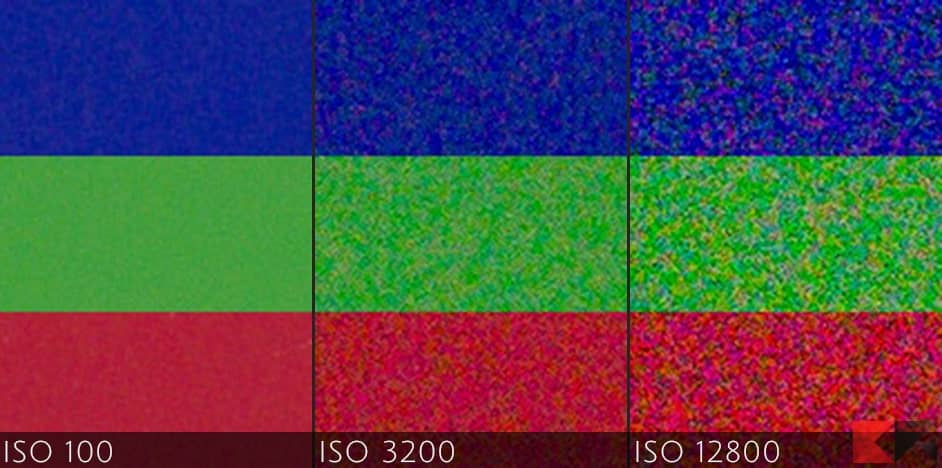
This is a big problem: increasing the number of pixels we have more defined images, but at the same time the performance of the sensor at medium-high sensitivities becomes poorer. The solution lies in the middle, as in everything, looking for the right compromise between a sensor of sufficient size to have a good number of photodiodes of the size necessary to keep down the noise introduced in photography.
But how much should an optimal photodiode measure ?
The light that we perceive has a wavelength between 400 and 750 nanometers, i.e. between 0.4 and 0.75 micrometers , this is the minimum value that a photodiode can have, if it were smaller it would not be able to catch the light beam. For this reason, the photodiodes of compact cameras measure 2 or 3 micrometres , while those present on APS-C sensors have dimensions of 5 or 6 micrometres .
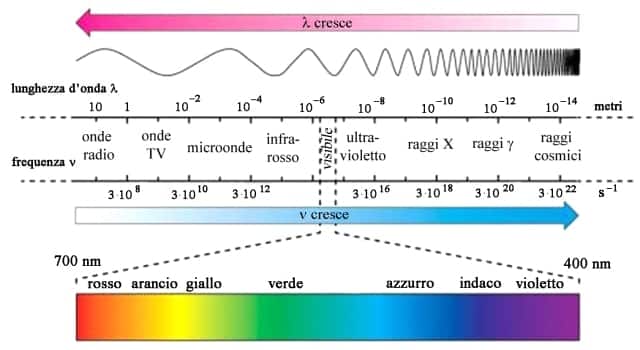
Photo sensor: CCD or CMOS
In general we can say that there are two main types of sensor: CMOS (Complementary Metal Oxide Semiconductor) and CCD ( Charge-Coupled Device ).
It is always about two sensors equipped with photodiodes, they are different in manufacturing and layout of the circuits , let's see now how they are made and that different characteristics imply the different realization of these two sensors.
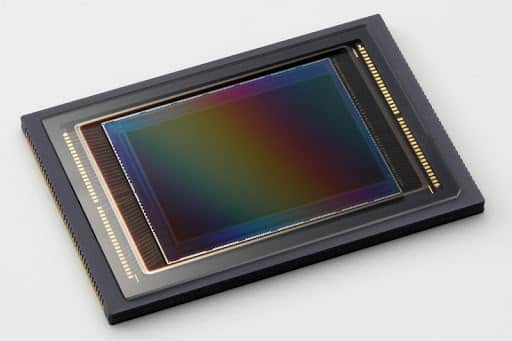
Let's start with the oldest. The CCD digital sensor was developed in 1969 in Bell laboratories by Boyle and Smith who were designing a new type of semiconductor memory for computers. The first working prototype dates back to the following year, was used in the first solid-state video cameras and earned the two scientists the Nobel prize for physics in 2009 .
One of the differences between the two sensors is that the CMOS convert the electric charges of each element independently, on the contrary the CCDs use a single output amplifier: the electric charge collected by the photodiodes is transferred to the edges of the sensor, here it is amplified and converted into the digital signal needed by the processor.
What happens in a CMOS sensor is more elaborate but consumes less : each photodiode has an amplifier and a converter, in this way a potential difference is transmitted and not an electric charge as occurs in the CCD sensor.
Due to the difficulty of manufacturing CMOS sensors were taken into consideration only at the end of the 90s but, with the advent of new technologies, the production of the latter has been simplified making CMOS the most used sensors.
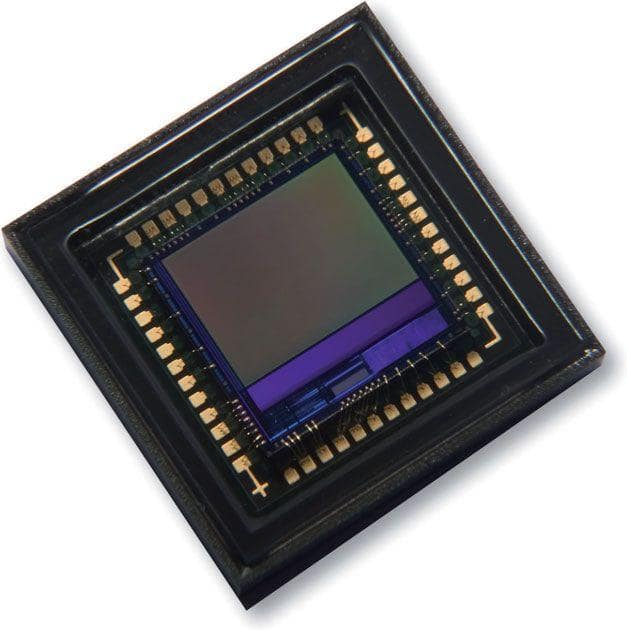
Why choose a CCD sensor?
They have a higher dynamic range , higher sensitivity , compared to CMOS they have a lower noise level due to the lower integration within the photosensitive area, it has a higher efficiency with a higher fill factor .
And what are the advantages of a CMOS sensor instead?
In addition to the aforementioned lower electricity consumption and the consequent lower overheating , the integration present on the chip allows a simplification of the electronic components of the camera , in addition, producing a sensor of this type has a lower cost .
In reality we cannot say that one sensor is better than the other, the quality of the shot obtained depends on how the technology is implemented .
Starting from these 2 types of digital sensors, others have been developed:
Foveon X3
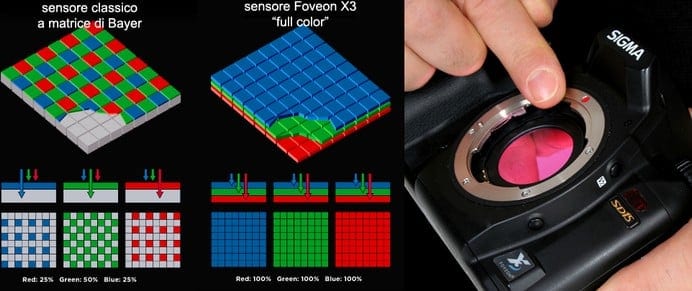
We have already covered this topic above. It is a CMOS sensor manufactured by Sigma who use it in their DSRLs.
Consisting of 3 superimposed levels, it allows a single pixel to capture all the colors .
The photographs taken with this sensor have very realistic tones , have exceptional detail but suffer from the sensor's reduced resistance to ISO .
Super CCDs
Sensor derived from the CCD and developed in 1999 by Fujifilm .
In 2003 Fujifilm introduced the fourth generation of this type of sensor with 2 variants: Super CCD HR (High Resolution, High Definition) and Super CCD SR ( Super dynamic Range).
With this new generation the pixels become octagonal in shape , arranged in a honeycomb on inclined rows with an angle of 45° , thus obtaining a better vertical and horizontal resolution (once again: like the human eye) at the expense of the diagonal .
With this structure the photoreceptors are wider and less distant, consequently the sensitivity of the system is increased . Obviously the information obtained must be rearranged in a grid with square pixels before being usable.
In Super CCD SRs, inside each pixel we find two photodiodes of different sizes , a smaller one for bright light conditions and a larger one for darker situations.

Super HAD CCDs
This sensor was developed by Sony , through an increase in sensor sensitivity and a reduction in interference , the amount of light that reaches each individual photodiode is increased , in fact HAD means Hole Accumulation Diode. This type of sensor boasts twice the sensitivity of CCD ones .
Back Illuminated CMOS (or Back Illuminated or BSI)
Sony 's 2009 EXMOR-R sensor belongs to this category.
Back Illuminated CMOS sensors were born in 2007 thanks to OmniVision Technologies, but initially their use was limited due to the construction complexity and high production costs.
In these sensors, the photodiode is in direct contact with the front lens which directs the light beam, and not in proximity as occurs in other types of CMOS sensors.
This construction avoids the dispersion of the light signal caused by the reflection of the circuit itself . Initially this sensor had a lot of noise, producing extremely blurry photographs. As research progressed this problem was resolved.
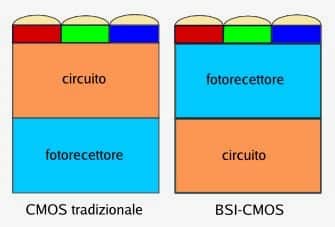
Live MOS
These sensors use CMOS technology to produce CCD- like performance without excessive power consumption.
Olympus, Panasonic and Leica have been using sensors of this type on their Micro Four Thirds DSRLs since 2006 .
Photo sensor: how to clean

Sometimes it happens to take a picture and notice some annoying black dots in the image, this can be due to 2 things: a dirty lens or a dirty sensor .
To understand if it's the sensor's fault, I suggest you take a picture of a completely white wall or sheet of paper , with a very small aperture . If you see dark colored spots appearing in the photo, it means that a little dust has entered your camera, with normal use or when changing a lens, and settled on the sensor.
If you see specks with the blank wall test, surely the first maneuver to do is to start automatic sensor cleaning . Almost all cameras have a function that enables the automatic sensor cleaning function, if desired it can also be programmed for each time the camera is turned on or off .
One important thing: the machine must be kept upright while carrying out this operation , in this way the sensor remains perpendicular to the floor, tilting it downwards or upwards causes the dust grains to settle on the internal components.
But what if this step isn't enough?
ATTENTION. The sensor is extremely delicate , during a cleaning operation, even if done by qualified personnel, the risk of scratching it is quite high. For this reason it is very important to always take care of your sensor by changing the lenses in an area as free from dust or sand as possible and taking care to always keep the sensor exposed for the shortest possible time and above all always facing downwards.
Prevention is better than cure. But if we are forced to cure?
The most dispassionate advice I feel like giving you is: if there are few spots, a post-production puree will be enough to eliminate them, it's better than risking a scratch on the sensor.
But if there are many stains, you are afraid that the dirt will solidify or simply dry up this extra work every time you develop your images, there are two solutions: do-it-yourself or qualified assistance .
If you don't feel like risking it, the best solution is to bring your camera to assistance, they will return it to you after a few days or even on a clean day for a price that is around 50 euros.
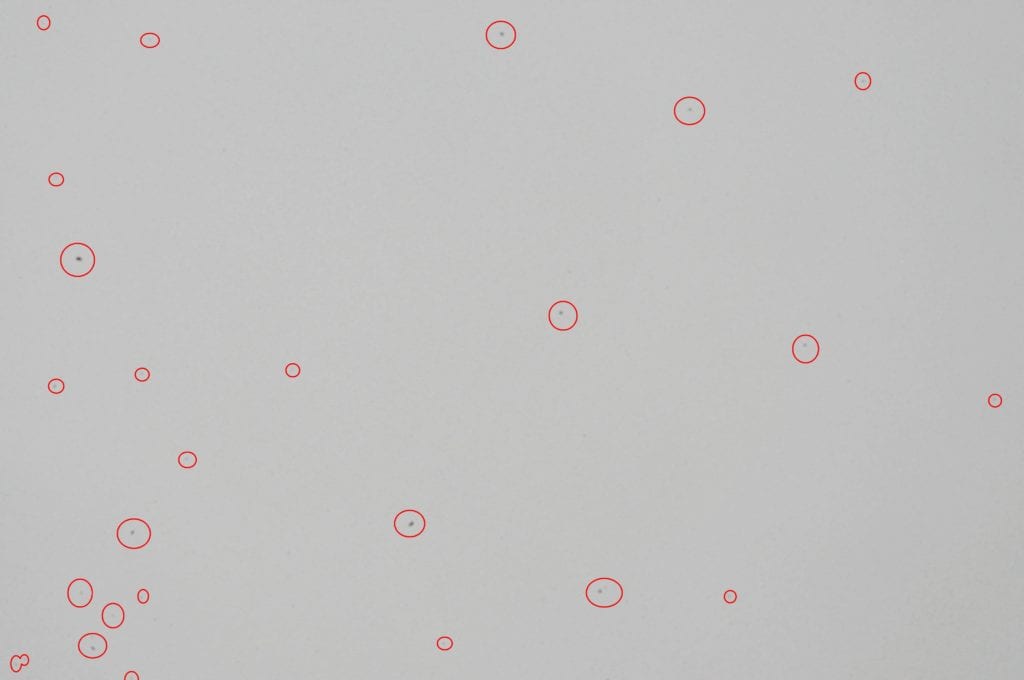
If, on the other hand, you are an extremely precise person and you love working with your hands taking care of your objects, here's how to do it.
But first a moment of attention: here's what to NEVER do (or the spirits of past, present and future photographers will come to haunt you every night):
- do not blow with your mouth , you risk getting droplets of saliva on the sensor;
- never use cans of compressed air instead of the pump, the air jet is too strong and could damage the sensor;
- do not use a generic brush such as make-up or paint brushes, as well as possible traces of dirt, they are made of a material that is too stiff and you risk scratching the sensor;
- do not use strange liquids on the sensor (soap, detergents or alcohol), use only the special ones.
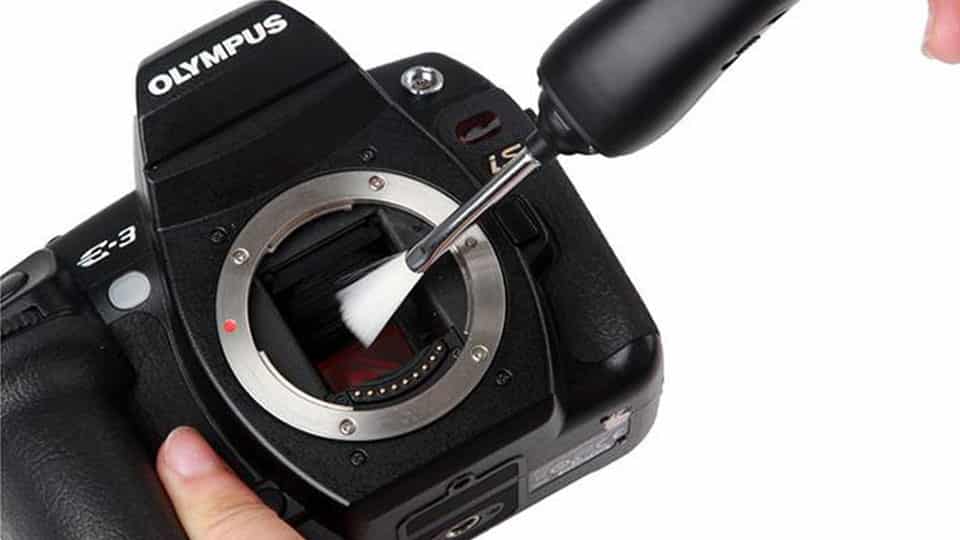
And now let's see what to buy and how to act.
You will need a blower or a special spatula for cleaning the sensor, which can be purchased on the internet or in a photography shop.
Put your camera on a flat surface, remove the lens and immediately close it (or you'll be back to square one next time you mount it…) with its cap.
Turn on the camera and raise the mirror (the camera manual always explains how to do it) at this point use the pump or the spatula, don't forget to be delicate.
Done? Sew up your patient, close everything up, repeat the white wall test and you should have solved it, at least for the less stubborn stains.
When you subscribe to the blog, we will send you an e-mail when there are new updates on the site so you wouldn't miss them.
By accepting you will be accessing a service provided by a third-party external to https://www.insightadv.it/


































































Comments